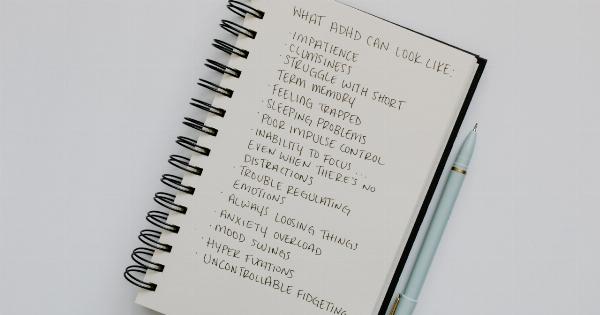Obsessive-Compulsive Disorder (OCD) is a mental health disorder characterized by unwanted, intrusive thoughts and repetitive, ritualistic behaviors. It affects millions of people worldwide, causing significant distress and interference in daily life.
Identifying OCD symptoms early on is crucial for timely diagnosis and effective treatment. This visual guide will help you recognize the common signs of OCD.
1. Constant, Intrusive Thoughts
One of the primary symptoms of OCD is experiencing persistent and distressing thoughts that invade your mind, even when you try to ignore or suppress them.
These thoughts often revolve around fears of contamination, harmful impulses, or doubts about safety.
2. Fear of Contamination
Individuals with OCD may have an excessive fear of germs, bacteria, or toxins. They may go to great lengths to avoid touch, use excessive handwashing, or constantly clean and disinfect their surroundings.
3. Symmetry and Orderliness
OCD can manifest in an obsession with symmetry, exactness, and order. Those affected may feel an overwhelming urge to arrange objects in a specific way, ensuring they are perfectly aligned, organized, or in specific patterns.
4. Checking and Rechecking
People with OCD often feel compelled to check and recheck things repeatedly, such as locked doors, stoves, or electrical switches.
They may struggle to trust their memory or fear disastrous consequences if they don’t perform these checking rituals.
5. Hoarding and Collecting
Hoarding and collecting items excessively are common symptoms of OCD. Those affected have difficulty discarding or parting with possessions, leading to cluttered living spaces.
The hoarding behavior is driven by irrational fears of throwing away something important.
6. Excessive Doubt and Uncertainty
Individuals with OCD often experience excessive doubts and uncertainties, leading to an intense need for reassurance. They might repeatedly ask for reassurance or seek information to alleviate their anxiety.
7. Intrusive Mental Images
Intrusive mental images or thoughts that are violent, sexual, or socially unacceptable may occur in individuals with OCD.
These distressing thoughts are not indicative of a person’s true desires but are highly distressing and cause immense guilt or shame.
8. Ritualistic Behaviors
Compulsive rituals or behaviors are a hallmark of OCD. These rituals are often performed to relieve anxiety caused by obsessions. Examples include counting, repeating specific phrases, tapping, or arranging items in a particular sequence.
9. Excessive Time Spent on Rituals
Individuals with OCD may spend an excessive amount of time engaging in rituals or repetitive behaviors to reduce anxiety or prevent perceived harm. This can significantly interfere with daily activities and relationships.
10. Emotional Distress and Impairment
OCD can cause significant emotional distress, leading to feelings of depression, frustration, or guilt. The disorder often interferes with work, social interactions, and personal relationships.
Conclusion
Early identification and intervention are crucial in managing OCD effectively. If you or someone you know exhibits several of these symptoms and experiences distress or interference in daily life, it may be essential to seek professional help.
With appropriate treatment and support, individuals with OCD can lead fulfilling lives and minimize the impact of their symptoms.

























